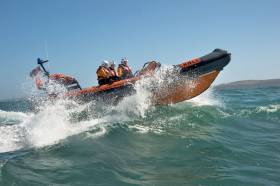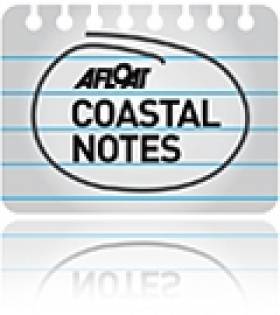Displaying items by tag: Mizen Head
#RNLI - Baltimore RNLI assisted two sailors yesterday evening (Monday 14 August) after their yacht lost power off Mizen Head in West Cork.
The alarm was raised earlier in the afternoon following a report from the crew of a 26ft yacht that they had lost all battery power.
At the time, the occupants were comfortable sailing the yacht towards Baltimore, so the lifeboat was put on standby until they were closer.
However, due to a confused sea in a strong tideway, the yacht was making very little progress towards land and required assistance to get to port.
The inshore lifeboat, helmed by Micheal Cottrell and with crew members Ryan O’Mahony and Colin Rochford on board, left station at 7.20pm and met the yacht three miles west of Cape Clear Island just before 8pm.
Weather conditions at the time were relatively good, with a Force 3 south-westerly wind and a one-metre sea swell.
One of the lifeboat crew went aboard the yacht to assist with rigging a tow and, once that was established at 8.05pm, a course was set for North Harbour in Cape Clear where the vessel was moored safely at 8.55pm.
Speaking following the callout, Cottrell said: “The sailors did the right thing in initially alerting people ashore to their predicament and then seeking the assistance of the lifeboat before darkness when their situation wasn’t improving.”
West Cork Coast From The Air
#coastalnotes – Following on from Winkie Nixon's blog a fortnight ago about the Sailing and boating wonders of West Cork, here's a selection of aerial views from the Baltimore Beacon to Mizen Head taking in Lough Hyne, Ballydehob, Foil na Muc, Bantry House, Mount Gabriel, Cadogans Strand, Schull Community Inshore Rescue Headquarters and Barleycove on the way.
The Video was shot from a Octocopter UAV platform with a GoPro Hero 3+ and uploaded to youtube by the Eye in the Sky.
Report Into Loss of Janireh Crewman Now Online
The full report of the investigation into the loss of a crewman from the fishing vessel Janireh earlier this year is now available online.
Egyptian national Nadi Sehsaah died after falling overboard from the trawler some 20 nautical miles south west of Mizen Head. It is believed he was not wearing a flotation device at the time of the accident.
The Marine Casualty Investigation Board (MCIB) has said there is an onus on the fishing industry to improve safety standards across the board, according to the Irish Examiner - which has more on the story HERE.
The MCIB report is available to download HERE.


























































